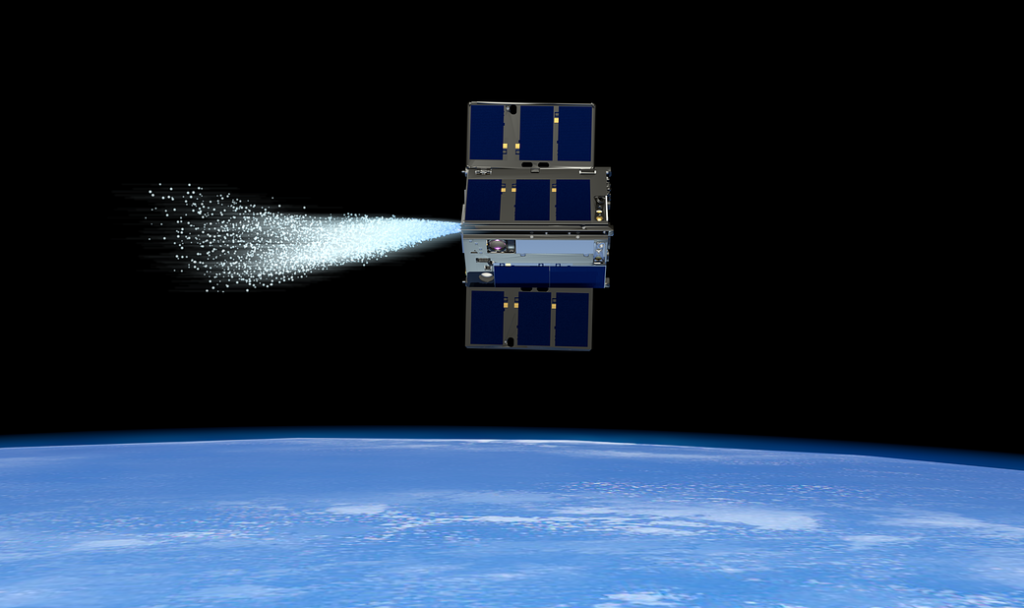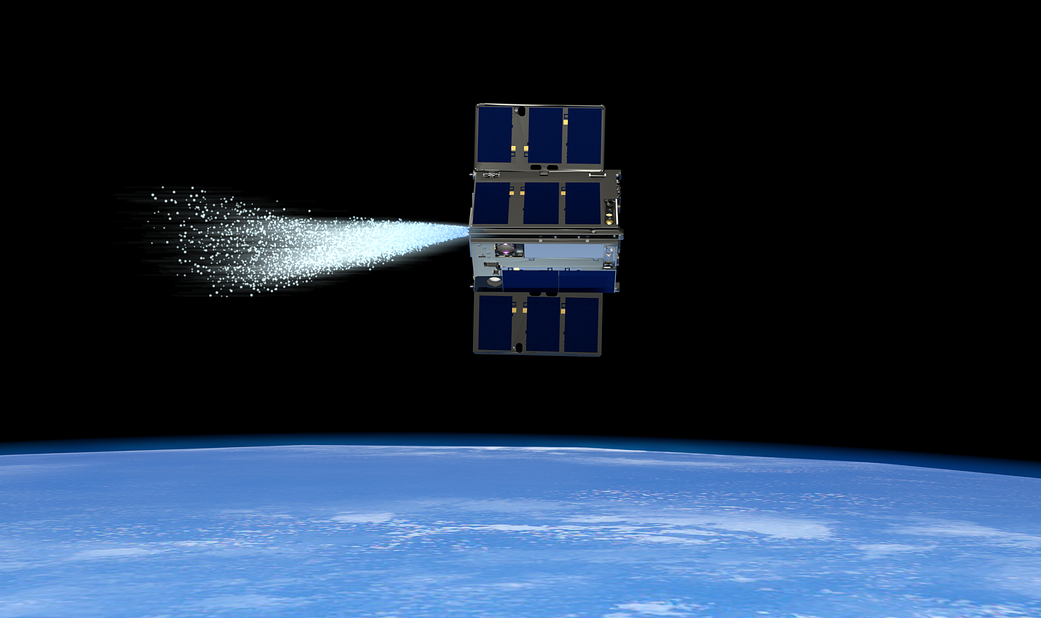
Two of the US National Aeronautics and Space Administration’s (NASA) CubeSats have executed a coordinated manoeuvre in space for the first time, demonstrating technology that could one day allow swarms of small satellites to carry out coordinated missions, the agency said on 3 August.
The water-powered spacecraft, which are about the size of a standard tissue box, were approximately 5.5 miles apart when one told the other to activate its thruster and move in closer via radio frequency communications. The fuel tanks on both spacecraft are filled with water, which was converted to steam by the thrusters to move the spacecraft during the manoeuvre.
CubeSats are a class of research spacecraft called nanosatellites and are, unsurprisingly, cube-shaped. They are spacecraft size in units or U’s, typically up to 12 U (a unit is defined as a volume of about 10 cm x 10 cm x 10 cm and usually weighs under 1.33 kg).
Conducted on 21 June, the demonstration took place in low-Earth orbit as part of NASA’s Optical Communications and Sensor Demonstration (OCSD) mission. It was designed with a series of safeguards to ensure that only a pre-planned and authorized manoeuvre could take place.
While it was choreographed by human operators on the ground, the demonstration shows it is possible for a series of manoeuvres to be planned using onboard processing and executed cooperatively by a group of small spacecraft, NASA said.
Three OCSD spacecraft were developed and are operated for NASA by The Aerospace Corporation. The first OCSD was a risk-reduction mission that launched in 2015 to calibrate and refine tools to support this current flight of the OCSD-B and OCSD-C spacecraft.
OCSD is funded by NASA’s Small Spacecraft Technology program within the agency’s Space Technology Mission Directorate. NASA’s Small Spacecraft Technology program is managed by NASA’s Ames Research Center in California’s Silicon Valley.
“Demonstrations such as this will help advance technologies that will allow for greater and more extended use of small spacecraft in and beyond Earth-orbit,” Roger Hunter, program manager of the Small Spacecraft Technology program, said in a statement.
“The OCSD team is very pleased to continue demonstrating new technical capabilities as part of this extended mission, over 1.5 years after deployment,” Darren Rowen, director of the Small Satellite Department at The Aerospace Corporation, added.
“It is exciting to think about the possibilities enabled with respect to deep space, autonomously organizing swarms of small spacecraft,” he said.


Leave a Reply